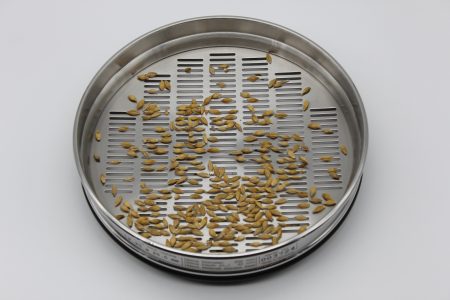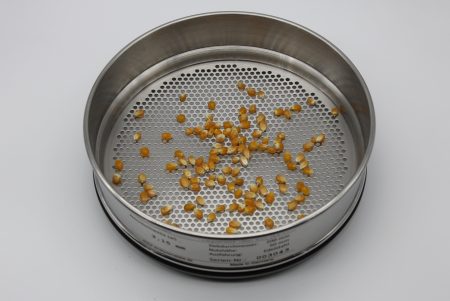A point oftentimes causing confusion when purchasing test sieves is the height of the sieve frame. Most sieve manufacturers give the dimensions of sieves as (sieve diameter) x (sieve depth), e.g. 200 x 32 mm whereas the sieve depth refers to the distance from the sieving medium (either a woven wire cloth, perforated plate of electroformed sheet) to the upper edge of the test sieve -- not the total height of the of the sieve frame from the lower to the upper edge. Please refer to the official definitions and the illustration below for clarification:
ISO 2395: Test Sieves and test sieving - Vocabulary
Sieve Depth (H1): Distance between the top rim of the sieve and the sieving medium.
Sieve Height (H2): Distance between the top and bottom rims of the sieve.

Conversely, these definitions mean that the distance between two successive sieving media in a set of stacked test sieves (the distance between two successive perforated plates) is approximately equal to H1. Grain sieves according to EN ISO 5223 must have a distance between successive sieving media of 25 to 55 mm (ref. Section 4.3.1). This condition is satisfied by the widely available, standard test sieve types 200 x 25, 200 x 32 and 200 x 50 mm. Typically, sieves with 25 or 32 mm depth are used for manual sieving by hand on site while the taller 200 x 50 mm sieves are used for automatic sieving with a shaker.


